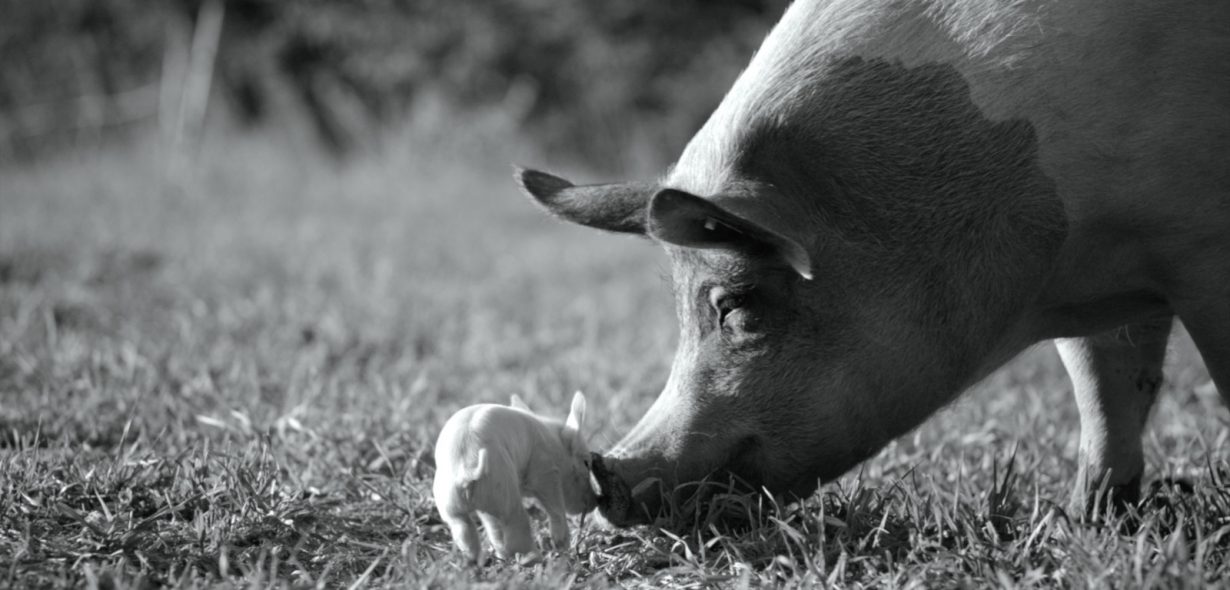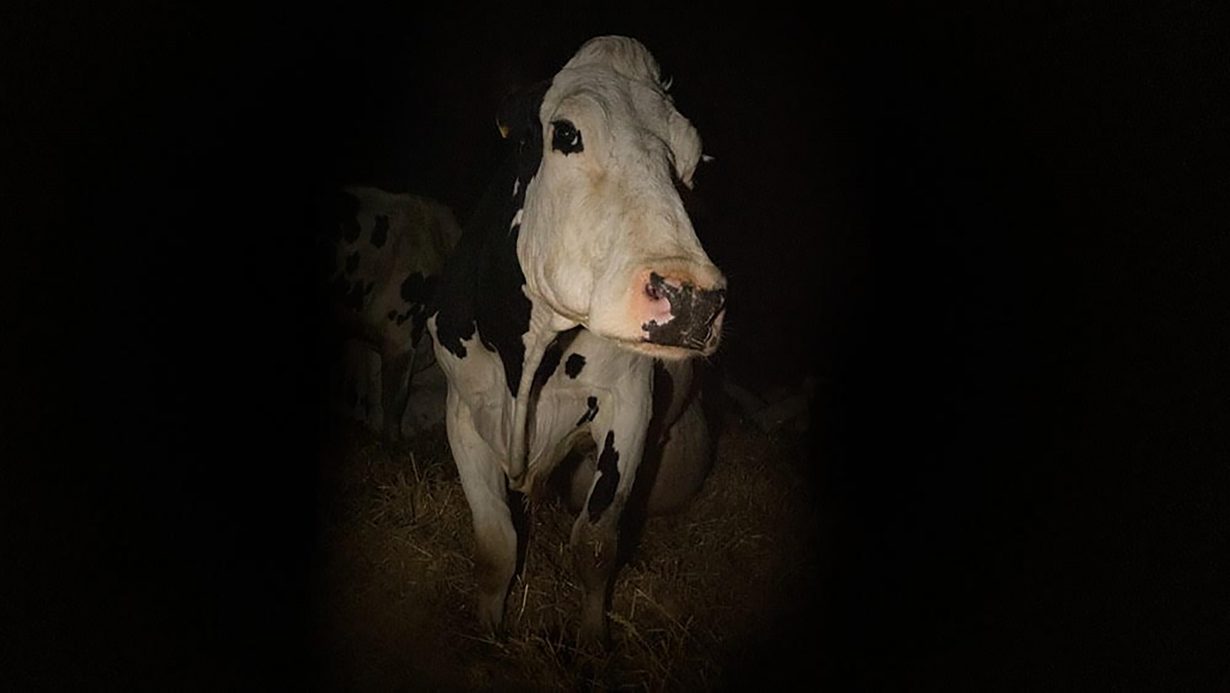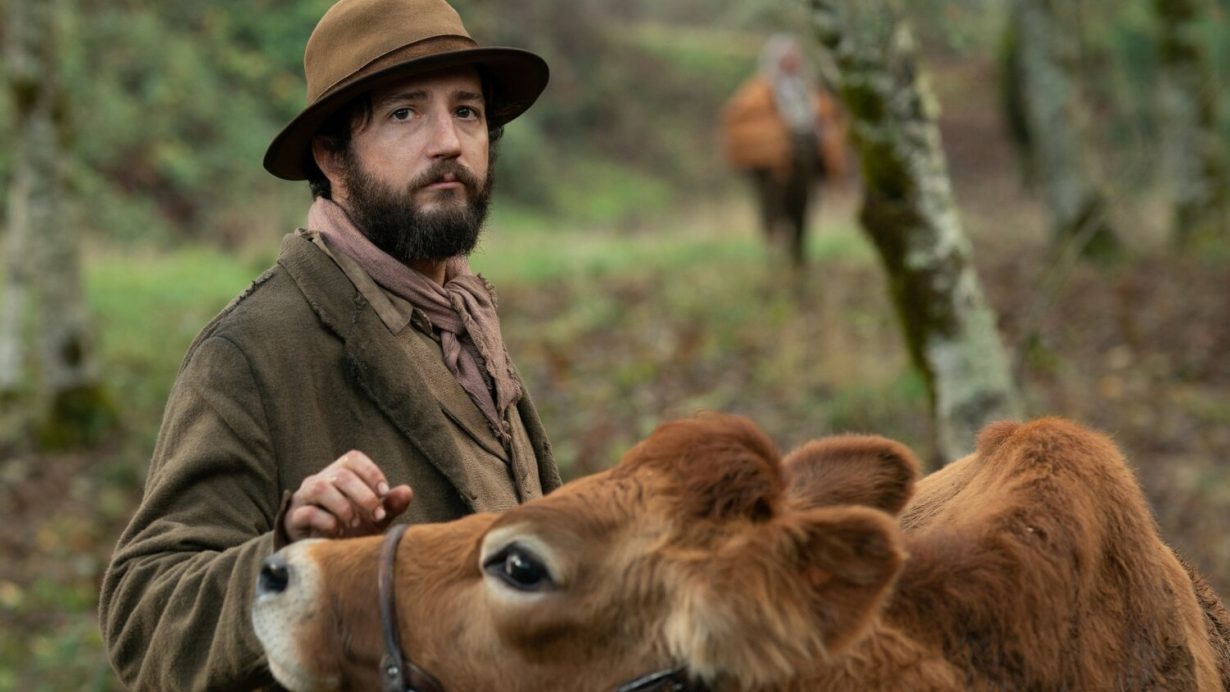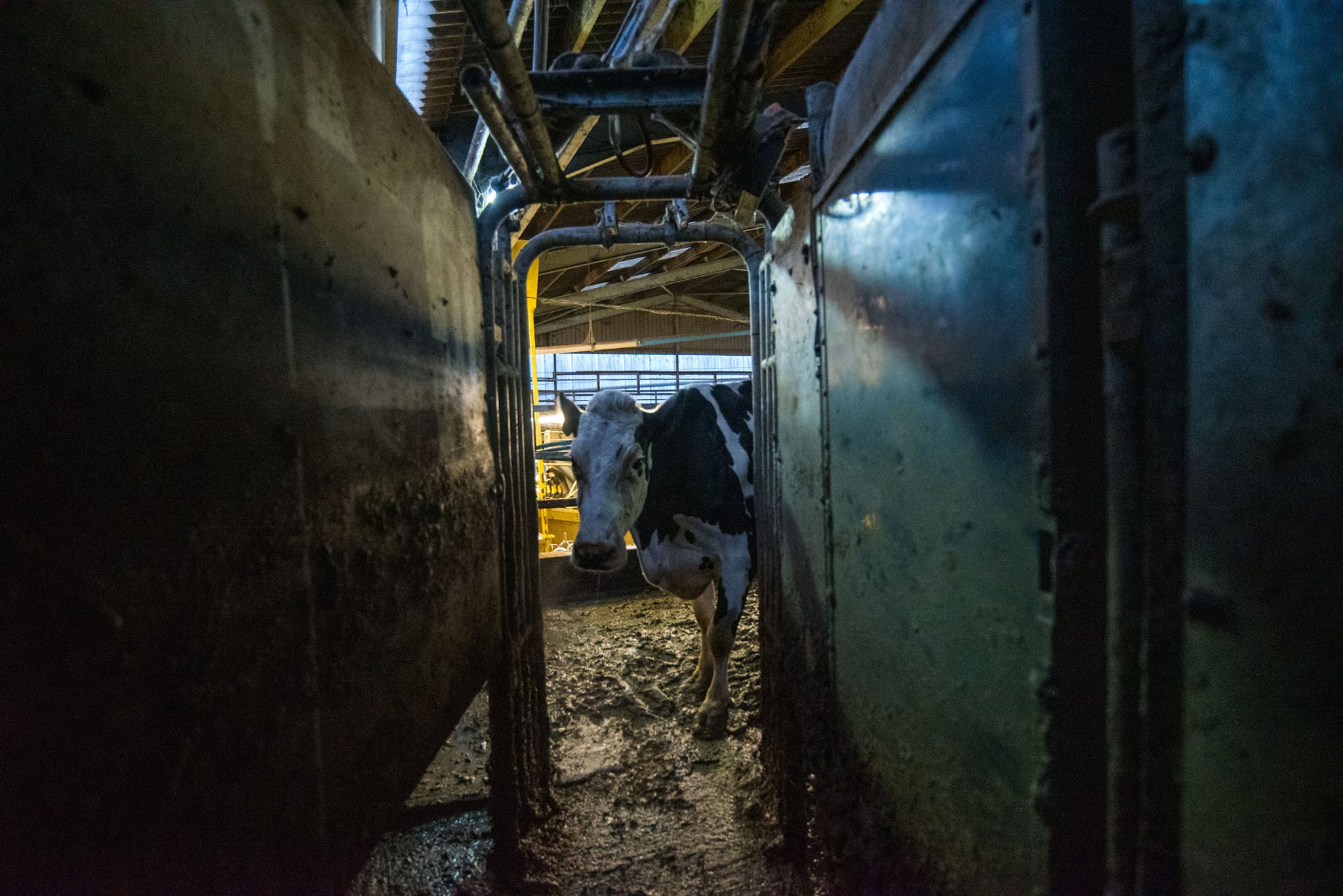Filmmakers’ interest in the inhabitants of farmyards and beyond reflects a newfound longing for connection with the ‘more-than-human’ world
In 1780, philosopher Jeremy Bentham said of animals: ‘The question is not, Can they reason?, nor Can they talk? but, Can they suffer?’ In Andrea Arnold’s documentary Cow (2021), a socio-realist portrait of a dairy cow called Luma on a farm in Kent, the answer seems to be an unequivocal yes. Having given birth in a darkened cowshed amidst the company of humans, Luma licks the amniotic fluid from her newborns. Then, just days after, she finds herself forcibly estranged from them. Each time, Luma appears to snap into a panic, pacing agitatedly and calling out beyond the metal building. Arnold’s camera lingers on the bereft figure; her cries go unanswered.
In spite of the brutality that Arnold relays, none less so than when Luma’s calf has her horns cauterised by a flesh-singing iron, Cow is not an animal-rights polemic against the dairy industry. Rather, Arnold’s attention remains locked on Luma herself and, intermittently, her offspring. The camera is held at eye level, looking inwards as Luma looks outwards. Amidst muck and straw, a human attempts to connect with a nonhuman profoundly other to her. During the editing process, Arnold kept saying, ‘I’m seeing you, Luma. Don’t worry Luma, we see you.’ This is a sentiment that seems to echo through modern filmmaking to other non-humans, those that take centre stage in works of fiction such as Valdimar Jóhannsson’s folk horror Lamb (2021), Michael Sarnoski’s truffle-hunting Pig (2021), and Kelly Reichardt’s period drama First Cow (2019), as well as documentaries like Victor Kossakovsky’s Gunda (2021) and Pippa Ehrlich and James Reed’s Netflix hit My Octopus Teacher (2020). Cow, however, takes us closer into a nonhuman world than any of these films; a work of pain and joy; admirably distant and yet necessarily intimate.

The film Arnold’s Cow is closest in form to, if not style, is Kossakovsky’s Gunda, another work concerned with nonhuman motherhood. However, the picture Kossakovsky paints is mostly idyllic, aside, it should be stressed in the strongest possible terms, from the opening scene when the sow, Gunda, kills her own newborn piglet (perhaps sensing it was the runt of the litter). Kossakovsky’s focus, however, gradually extends beyond the porcine family to an entire cast of farmyard animals, from a one-legged chicken to a herd of cows. Like Arnold’s documentary, the camera is kept at the height of the various creatures (this is their world, not ours), but Kossakovsky’s cinematography moves with deliberate, smooth grace unlike Arnold’s urgent, balletic improvisations that seem to mimic Luma’s own motion. Combined with the decision to film in black and white, Gunda unapologetically prettifies and, to an extent, memorialises its subjects.
Despite the slow, impressionistic style – which might have left ample room for us to formulate our own thoughts – I find Kossakovsky’s work too didactic. The Russian filmmaker has been a vegetarian since childhood, and in a recent interview with Sight & Sound, expressed his delight that various young people on the film’s production began asking for vegetarian and vegan options at restaurants. Watching, it’s hard to shake the feeling that the film is as much about his perspective as those of the animals he films (despite the fact that the 93-minute film is entirely wordless).

Arnold’s Cow situates Luma within a context of commercial exploitation that Gunda only ever hints at. Her entire value is derived from her condition as a productive unit, and so Arnold’s film asks thorny questions of us, the consumers – the extent we are willing to sacrifice the wellbeing of an animal for the goods we enjoy the taste of. A similar tension (of an animal with clear agency that’s nonetheless held in a state of productive captivity) exists in Reichardt’s First Cow – in which a chef travels through 1820s Oregon – but where Reichardt elevates the bovine to a nearly mythical status as the producer of the diet-enriching lactose, Arnold acknowledges Luma’s ultimate anonymity; she is but one black-and-white dappled face amongst many.
A far cry from First Cow’s tale of artisanal craft, Luma and her offspring are subjected to a fascinating, grotesquely modern type of capitalism. She is milked using machinery that flashes with fluorescent lights while her alienated calves suckle on synthetic udders, almost as if their lives are playing out within a simulacrum (certainly a panopticon). This setting is one of the reasons why Arnold’s reaching out – of ‘seeing’ Luma – is so powerful. It extends a sense of kinship to a working animal who has, in our recent history, been denied it. In this way, Cow feels as if it’s in conversation with what philosopher Donna Haraway has been espousing for years, namely that she shares her own sense of kinship with those she calls ‘more-than-humans’ (as opposed to ‘nonhumans’). ‘To be any kind of animal at all is to be within obligate mutualisms with a whole range of other plants, animals, and microbes,’ she said in 2019. ‘It’s good science. And besides, I live with companion animals of the household kind.’

This idea of ‘more-than-human’ kinship is still taboo (at least beyond cats and dogs), but not in either Jóhannsson’s Lamb or Sarnoski’s Pig. In these films, we see ostracised humans strike up touching relationships with animals. In Pig, a grizzled, noticeably unkempt Nicolas Cage, shares his home with his truffle pig, and in Lamb, Noomi Rapace shares a bathtub with her bleating adopted dependent. In each instance, it’s as if the wall that exists between humans and non-humans (which eco-philosopher Timothy Morton dates back to the Neolithic period and the invention of agriculture in Being Ecological, 2018) has simply been dismantled.
Such filmmaking is also a reflection of developments in philosophy, science, and ethics. In 2012, a prominent group of scientists signed the Cambridge Declaration on Consciousness, a statement proclaiming that animals are conscious and aware to the degree that humans are. In the face of environmental crises, we know with growing certainty that our fates are intimately intertwined and, most recently, the COVID-19 pandemic has shown that, epidemiologically at least, there is little to separate ‘us’ from ‘them.’ Cow is in conversation with such ideas but its focus never ventures beyond Luma or her calves, only the way they perceive and react to the world. Crucially, it never resorts to anthropomorphisation, a colossal achievement in itself. Arnold’s eye remains clear throughout – her film is an ode to a life that’s all too often taken for granted.
